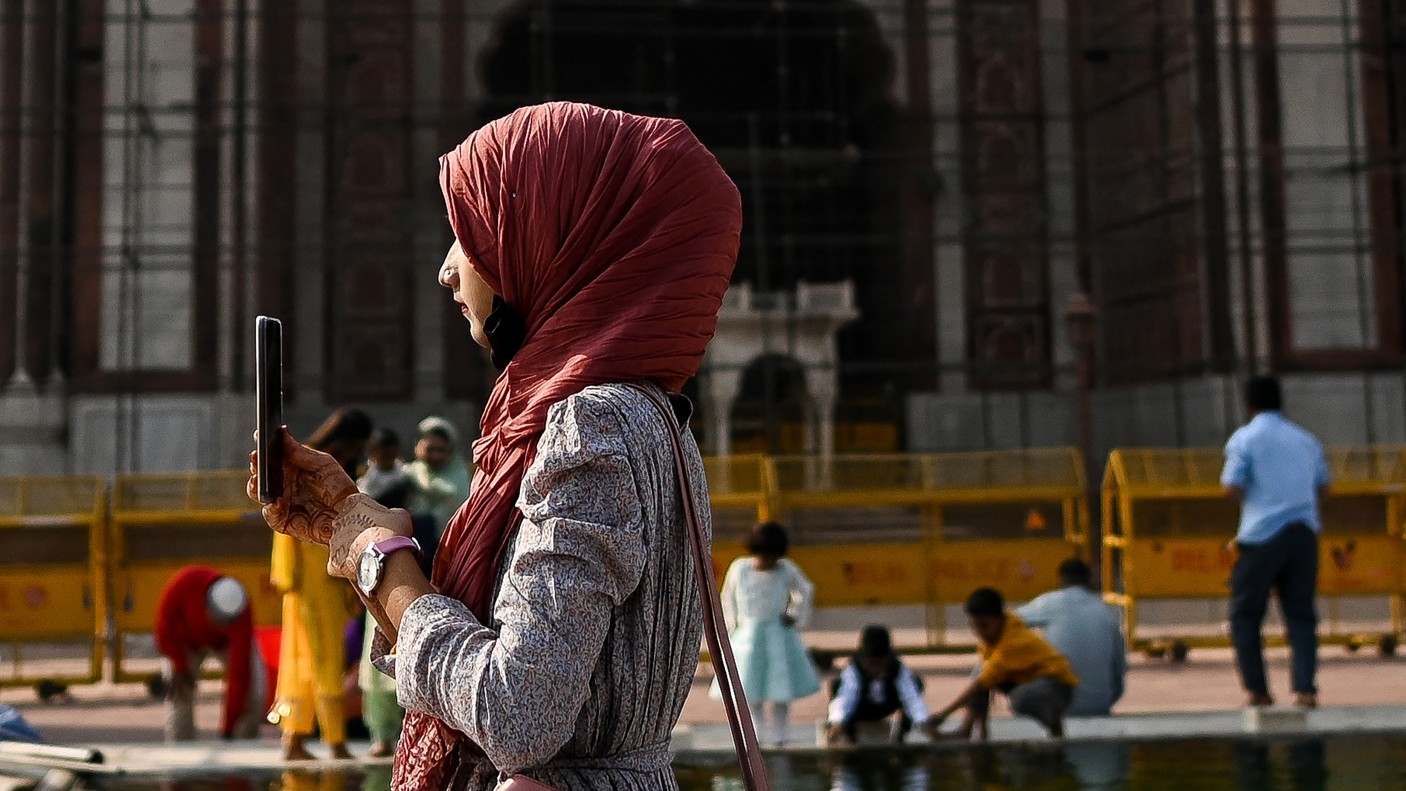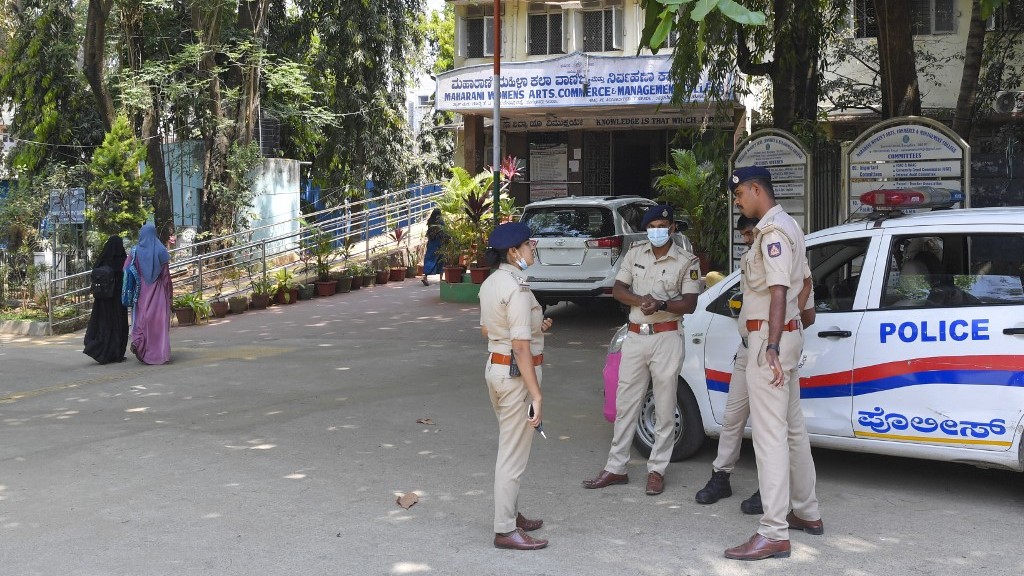Repression and fear: Life as a hijabi Muslim in Modi's India

Back in 2018, when I was a teacher trainee at a school in New Delhi, the headmistress interrupted my class with more than 40 children to ask whether I thought “this” should be allowed in school, repeating the hackneyed notion that “religion should not come into profession”. I was asked to stop wearing my headscarf in school.
By 2018, Muslims had already been pushed further towards the margins in India, so this incident wasn’t particularly surprising. But as we step into 2023, being harassed for wearing the hijab has become a daily reality for many Muslim women under Prime Minister Narendra Modi’s Hindu nationalist government.
According to a recent report from the People’s Union for Civil Liberties, more than 1,000 Muslim girls in Karnataka have left college amid a systematic campaign to isolate hijabi women from educational institutions. Hindutva organisations have carried out a vicious campaign against students wearing hijabs, fuelled by government and police inaction. Karnataka’s ban on hijabs in educational institutions was upheld last year by the state’s high court, thus denying these women the right to an education.
Why can't hijabi Muslim women just exist safely on their own terms in 'the world's largest democracy'?
The so-called hijab row is a part of a larger design by the ruling BJP to push the Muslim community further into the margins of society and to establish Hindu supremacy, where Muslims are shown “their place”. This is a systematic attack on the right to education for Muslim women, exacerbating our Otherisation and stymying our chances for upward mobility.
We are regularly reminded of the challenges inherent in being a hijabi woman in Modi’s India. It requires navigating a difficult landscape of prejudice, discrimination, and escalating religious tensions, in a society where diversity is celebrated as a defining characteristic of its heritage. Hijabi women, including myself, must negotiate a culture that frequently views us as second-class citizens, less deserving of respect and dignity, amid the growth of Hindu nationalism and the current political atmosphere.
Stay informed with MEE's newsletters
Sign up to get the latest alerts, insights and analysis, starting with Turkey Unpacked
From being denied employment opportunities to facing verbal and physical abuse on the streets, the reality of being a hijabi woman in India today is far from the inclusive and tolerant society promised by the government. With the rise of Hindu nationalism, hijabi women increasingly face the burden of representing their faith, often having to defend their right to wear the hijab in the face of hostile public opinion and government policies that undermine religious freedom.
Workplace discrimination
One of the most common forms of discrimination faced by hijabi women in India occurs in the workplace. A recent study from Led By Foundation sheds light on the intrinsic biases against Muslim women in terms of employment opportunities, noting that for every two callbacks a Hindu applicant gets, a Muslim with an equivalent resume gets just one.
In addition, many hijabi women are denied employment opportunities or subjected to unequal treatment in the workplace because of their hijab. One recent example is the case of Ghazala Ahmad, a young hijabi journalist who was denied a job at a media channel. Despite her qualifications and experience, the recruiters reportedly told her that she would not get the job if she did not remove her headscarf.
Hijabi women in India are also subjected to verbal abuse and physical violence in public spaces. Many share stories of being subjected to insults, taunts and mental abuse simply for wearing the hijab. One lecturer at a college in Tumakuru district quit her job last year after being told by college authorities to remove her hijab. This trend is likely to result in high unemployment rates among hijabi women, further marginalising us.
In a land where bigotry and violence reign supreme, the hijab has become a beacon for the hateful forces of Hindutva, singling out its wearers as easy targets. Yet, this blatant discrimination cannot be separated from the larger issue of hate crimes against all Muslims in India. The hijab serves as a visual marker of the dangers they face every day.
This environment has contributed to mental health issues among some hijabi women, amid fears of a potential full hijab ban across the country. Many are feeling isolated, anxious and paranoid - a situation made worse by the lack of government protection.
Despite India being a secular country, the government has failed to take a strong stance against the discrimination faced by hijabi women. In some cases, police have been complicit in the abuse and discrimination, either turning a blind eye or actively participating in it. This has left many hijabi women feeling vulnerable and afraid to speak out.
Growing hostility
In Modi’s India, being a hijabi woman is difficult and alienating. We want to hold on to our faith, but also receive the same respect as other citizens - yet, I know we won’t get both. Still, despite these challenges, many hijabi women remain committed to upholding their right to religious freedom, and proudly don the hijab.
The harassment and discrimination we face reinforces the understanding that Modi is not a champion of religious freedom and diversity, but rather a political figure who uses the guise of “protecting women” to justify oppressive actions. Modi’s rhetoric on the rights of Muslim women aims to deflect attention from his government’s policies, which have been detrimental to the rights of all Indian Muslims.
The hijab has emerged as a flashpoint in this cultural moment - a visible symbol of Otherness in a country that is growing more hostile to people who don’t fit the values of the Hindu majority. The reality of being a hijabi woman in Modi’s India is one of constant scrutiny and fear, but also one of resilience, determination and unwavering faith.
It is a sorrowful reality that young women such as Muskan Khan must endure and fight harassment at the hands of Hindutva extremists. It is a shame that these women must defend their right to receive an education simply because of a choice to wear the hijab, a symbol of faith and cultural identity. Such unjust treatment is a testament to the Indian state’s disregard for the rights and freedoms of Muslim women.
We get asked to appear on prime-time national TV debates to be asked the same old repulsive, condescending questions that we must answer with detailed and convincing explanations to justify our decision to wear the hijab. Muslim women are constantly questioned about why they wear the hijab, and their responses must conform to a pre-existing checklist.
Muslim women around the world wear the hijab for different reasons. Some hold onto their hijab tightly because it is connected to their faith, mandated by God; the intelligentsia, however, recoils from the idea of God, so this immediately becomes regressive for them.
Why must certain people in this society hold us accountable for our style of dressing and demand an answer that satisfies them, not us? Why can’t hijabi Muslim women just exist safely on their own terms in “the world’s largest democracy”?
The views expressed in this article belong to the author and do not necessarily reflect the editorial policy of Middle East Eye.
This article is available in French on Middle East Eye French edition.
Middle East Eye delivers independent and unrivalled coverage and analysis of the Middle East, North Africa and beyond. To learn more about republishing this content and the associated fees, please fill out this form. More about MEE can be found here.







